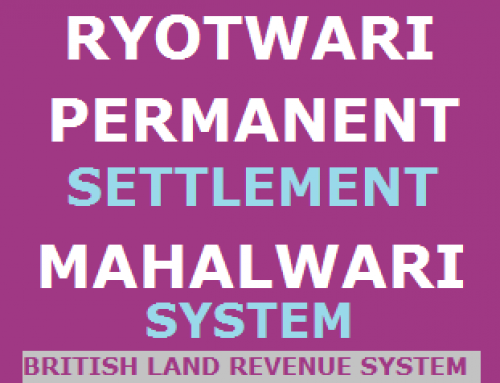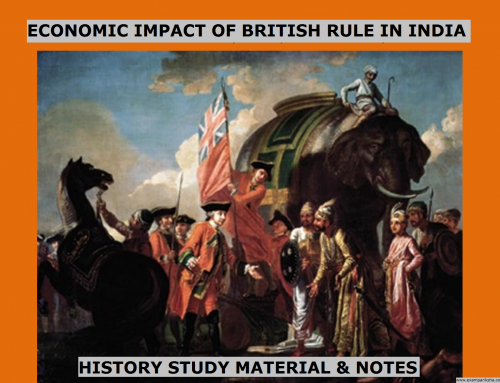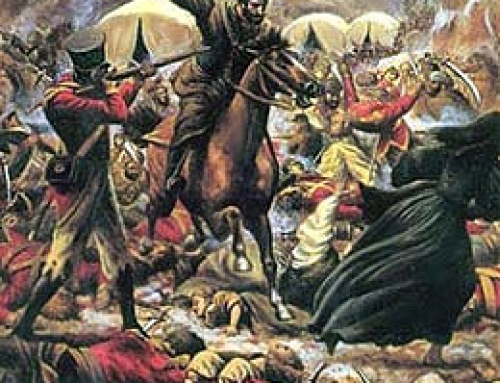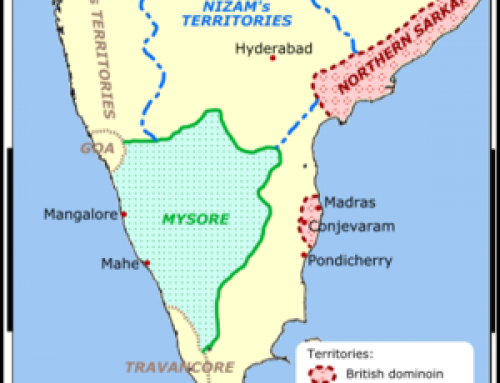The Mauryan Empire – under History Study Material & Notes.
After invasion by Alexander, the North western region in India faced various foreign attacks which caused unrest in these Indian States. Whereas, the Nandas who were ruling at that time were not popular due their severe taxation regimes imposed on agricultural by Dhanananda. The conditions like these gave opportunities to other authorities to take over the rule.
It was one of the greatest empires recorded in India history. The rule of Mauryas lasted from 322 – 185 B.C. where majority of India was united as a single state by the great founder emperor Chandragupta Maurya. With the help of Kautilya or Chanakya, Chandragupta Maurya laid the foundation of this vast empire.
After Chandragupta, his son Bindusara further extended the kingdom over entire sub-continent almost. It should be noted that the Mauryan Empire had the most powerful military in ancient India. After bindusara, came the greatest emporer of the Maurya dynasty, Ashoka. He was a skillful warrior and an able administrator. After the Kalinga war, Ashoka became a follower of Buddhism and caused its spread across the Indian sub-continent by sending missionaries.
We will describe the details of rulers of the Mauryan Dynasty in another post, first let us look into another important topic about the Maurya Empire, their administration.
<< Read about Pre-Mauryan dynasties here >>
Mauryan administration:
Questions regarding the administration regime followed in the Mauryan empire, have been asked in various descriptive exams like IAS mains exam, State PSC exams, etc. The details about the administration under Mauryas are required to answer the MCQ type question about history. Let us look into the details now:
Chanakya or Kautilyas Arthashastra explains the kind the of administration system followed in the Maurya Empire. The book has 15 sub-parts which contain 180 chapters. This book provides the most important literary source for study of the Mauryan administration.
The Central Government in Mauryan Empire:
- The King was supreme source of all power and authorities with judicial and administrative powers.
- Mauryan Administration was a very centralized system.
- The King had a Council of Ministers to assist him. These ministers were known as ‘Mantri’, and the council of Ministers was called ‘Mantriparishad’. There was a ‘mantriparishad-adhyakshya’ to head the Council, this is similar to our present Prime-Minister.
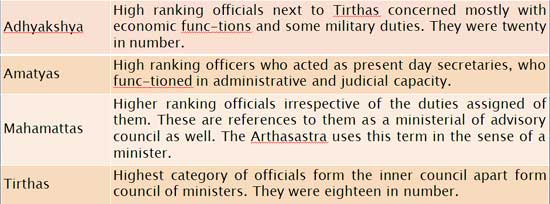
Kautilya’s ‘Arthashastra’ mentions about the Duties of Government Superintendents (Adyakshas). These Adhyakshas formed a secretariat, which was divided into several departments. These departments and their superintendents are mentioned below:
Intelligence:
- The espionage system in the Mauryan administration was developed and well-spread.
- According to the Arthashastra, there are two types of spies, namely, ‘Sansthana’ (the stationary) and ‘Sanchari’ (the wandering one).
- These spies acted as eyes and ears for the King, these kept the king well-informed about the whereabouts of the bureaucracy of the state.
- The detectives in Mauryan administration were known as ‘Gudhapurusha’.
- These agents included people from various segments of society, like, householders, merchants, ascetics, disciples, etc.
- There were special agents who acted as Poisonous girls called as ‘Vishkanyas’.
Army:
- Commander-in-chief was the overall in-charge of the Mauryan army, his position was immediately junior to the king. This Commander-in-chief was known as ‘Senapati’.
- The Senapati was appointed by the king.
- The salaries in Mauryan army were paid in cash.
- Their army included six lakh infantry, about 30,000 cavalry, nine thousand war elephants, eight thousand chariots.
- The Mauryans had a War Council divided into six sub-councils which formulated policy five sectors of the army – the infantry, the cavalry, the elephant forces, the chariots, the navy and the commiserate.
- The Mauryans made innvoations in field of Navy, Transport and Supply Wings.
Transport: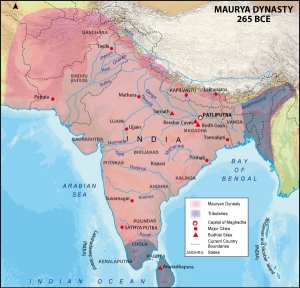
- Transport was handled by a separate Department of Road.
- The department decided the width of cattle tracks, chariots, and pedestrians, were prescribed differently.
- There were also trunk roads managed by the Department of Roads.
- Facilities for travellers were created along the roads, trees on both sides of the road were planted, Inns or restrooms for the travelling people were constructed near the roads, care was taken to provide drinking water to travelers by means of wells and canals.
Revenue Department:
-
The chief of Revenue Department was known as ‘Samharta’, he was in-charge all revenue collection.
-
The revenues was collected from land, irrigation, customs, shop tax, ferry tax, forests, mines and pastures,license fee from craftsmen, and fines collected in the law courts.
-
The value of land revenue demanded fixed at ‘one-sixth’ of the produce.
-
Majority of this revenue went to expenditure related to the household of the king, army, the government servants, poor relief, public works, etc.
Agriculture:
- The chief of Agriculture department was known as ‘Sitadhyaksha’.
- Then there was separate irrigation department as well which looked after a network of canals. These canals provided water for irrigation according to land requirements.


